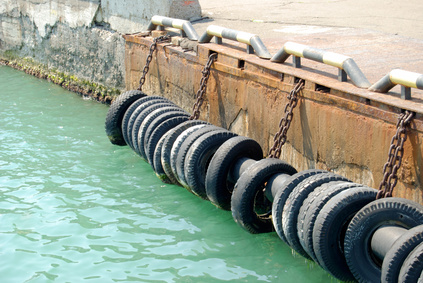
The degrading of rubber in automobile tires by exposure to ozone, heat, and ultraviolet (UV) radiation is called dry rot or rotting . Signs of this degradation are first seen as spiderweb-like cracks in the tire. This progresses to larger cracks and, finally, splitting and tire failure. Tire life (recommended replacement times are 6 to 10 years) can be enhanced by several strategies that will help protect them from premature rotting.
Check your tires for proper inflation pressures on a monthly basis. Buy and use a good digital tire gauge even though your tires may be equipped with tire pressure monitors. Do not use the maximum pounds per square inch (PSI) noted on the tire's sidewall as the measure for proper inflation; the recommended PSI for your vehicle's tires is located on the driver's side door jamb or in the owner's manual for your car. Under- or over-inflation of your tires inhibits the effectiveness of stabilizing additives found in most tires. These stabilizers fight rubber deterioration due to ozone, which contributes to tire rot.
Park your car in a garage or carport to decrease the tires' exposure to the elements. Parking garages are a better option than open parking lots, but when unavailable, park your car in a shady spot, if you can.
Tire covers, tarps, old sheets and blankets, or old, dark-colored shower curtains can be used to block sun exposure when no other form of cover is possible. Protection from excessive heat and UV rays will help protect your tires from premature rot.
Apply a tire conditioner that is formulated to protect tires from UV rays and/or ozone. Household cleansers, and petrochemical- or silicone-containing tire cleaning products can actually remove much of the tire's protective waxes. Two products that will help protect tires are 303 Aerospace Protectant and Wolfgang Black Diamond Tire Gel.
Drive the car regularly and at moderate speeds. Car tires that sit, unmoving, for long periods of time do not flex. Therefore, the stabilizing additives do not distribute as designed. Sustained high speed driving creates much heat which further contributes to tire deterioration and rot.
Buy new tires that were manufactured no more than two years prior. Dates are located on one side of each tire, and use numbers that coincide with week and year of manufacture. For example, 1209 means it was made in the twelfth week of 2009. Ask for tires that have UV stabilizers and ozone shielding additives. This protects you from owning tires whose lifespan is already reduced and are more likely to succumb to early rotting.